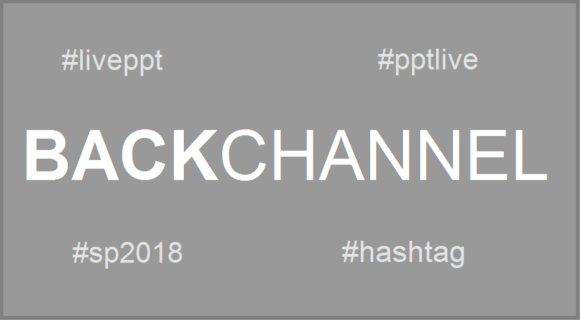People have been talking about the importance of backchannels in the context of conference presentations. However, what do backchannels really mean for your presentations? How should you react? Here, we will be discussing if backchannels impact corporate presentations.

What Are Backchannels?
Backchannels refer to social media content. This is content which people post in real time as they attend a presentation. It typically consists of comments and images which are shared to the world via Twitter, Facebook, Google+, etc.
Front Channel v.s. Back Channel
Front Channel refers to listening or talking to the presenter in real-time. Back channel means listening or talking to the presenter online.
Do Backchannels Matter To Corporate Presenters?
The way backchannels work is that the conference or event tells people to use a specific hashtag. For example, #pptlive is a hashtag. People can then follow this hashtag to get access to images and opinions shared by other people attending the same event. However, this is only applicable to large presentations where a hashtag has been announced and encouraged to be used.
Small Presentations Don’t Have Backchannels
The smaller the presentation, the less likely it is that anyone will be sharing on social media. Everyone will probably be too busy attending the presentation to tweet anything with their phones.
Interaction With The Presenter Makes Hashtags Irrelevant
In smaller presentations, the presenter has time to answer questions and concerns of people in the audience. If someone agrees, then they usually nod. If they disagree, then they can ask a question at the end of the presentation.
Front Channel > Back Channel
Unless yours is an online presentation, and unless there is a large audience; the Front Channel is always going to be more important than the Back Channel. Back Channels don’t really matter when you have many short presentations with small number of people, most of whom will talk to you if they have any concerns because they’re trying to get work done. In such presentations, there’s no real need for a Back Channel to exist.

Leave a Reply